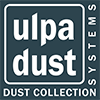1.) Can HEPA filters be cleaned?
HEPA filters are designed for single use. However, there are some specially laminated HEPA filters that can be cleaned with pressurized air systems like Jet-Pulse. Aside from these, conventional HEPA filters commonly in use cannot be cleaned.
2.) What is the best gasket type for HEPA filters?
The gasket type for HEPA filters shouldn’t be assessed independently. The sealing surface of the housing where the HEPA filter will be installed must be fully compatible with the gasket. For instance, gel-type filters are suitable for knife-edge sealing surfaces, while PU foam or EPDM is appropriate for flat surfaces. For surfaces with a test groove, either gel or flat EPDM gasketed HEPA filters should be used. Having the filter and housing manufactured by the same producer reduces potential leakage risks.
3.) How long should HEPA filters be used? When should they be replaced?
Under conditions without high contaminant concentrations, HEPA filters can have an indefinite lifespan depending on their operating conditions. As a general guideline, a lifespan of 10 years including shelf life is recommended. We’ve observed some Ulpatek HEPA filters in the market still functioning without issues within this period. Factors influencing the filter’s service life include: the volume of outdoor and re-circulated air filtered, frequency and duration of aerosol challenge exposure, total amount of aerosol impingement on the filter, method of aerosol introduction to the system, and the efficiency of pre-filtration. While there isn’t a strict standard on this, some pharmaceutical companies recommend 5 years lifespan for critical areas and 7 years for other areas in their guidelines.
4.) What is the recommended final pressure for HEPA filters?
For energy efficiency, the advised end-of-life differential pressure value for HEPA and ULPA filters is twice the initial pressure of the filter. Depending on the end user, this value can range between 300-600Pa.
5.) What is the shelf life of an unused HEPA/ULPA filter?
Ulpatek recommends a shelf life of up to 3 years. For filters stored beyond this period, a risk analysis should be performed before use. In any case, filters should be stored in their original packaging in a cool and dry environment away from extreme temperature and humidity conditions.
6.) Can HEPA/ULPA filters be repaired?
Filters can be repaired to specific limits both at the factory and in the field. Recommendations for repair in the factory can be found in the following standards:
IEST RP-CC001.5
IEST RP-CC034.4
ISO 29463
Additionally, ISO 14644-3 allows the customer and supplier to mutually agree upon the allowable repair size.
7.) How are ULPA filters tested?
According to ISO 29463, filters with an efficiency starting from ISO 50 (U15) should be tested for efficiency using the ISO 29463 Scan Test at MPPS.
8.) Which standards should be considered for testing HEPA filters?
EN 1822, ISO 29463, IEST-RP-CC001 and IEST-RP-CC034 are international standards related to air filtration, specifically focusing on high-efficiency particulate air (HEPA) and ultra-low penetration air (ULPA) filters. These standards define the requirements and test procedures for the classification, performance, and marking of these filters at factory. ISO14644-3:2019 which Portions of the test methods have been adapted from IEST-RP-CC034.4 specifies procedures for the leakage test of installed HEPA filters.
9.) Is there a specific direction of use for HEPA filters?
Conventional micro glass fiber has a homogeneous structure, and both of its surfaces possess identical properties, there might indeed be no specific airflow direction required for HEPA filters produce by this filtration media. However, when an additional component or surface feature, like lamination, is used the direction of airflow becomes important.
10.) Why MDF-Framed HEPA Filters Have a Recommended Usage of One Year?
HEPA filters with MDF (Medium Density Fiberboard) frames present certain concerns, especially in humid environments. The natural fibrous structure of MDF allows for the absorption of moisture, creating a conducive environment for the growth of microorganisms. Prolonged exposure to humidity can also lead to the formation of micro-cracks in the MDF structure. These cracks can directly impact filter performance, as they may hinder the proper flow of air through the filter or cause leakages. Due to these reasons, the recommended usage duration for MDF-framed HEPA filters is one year.



